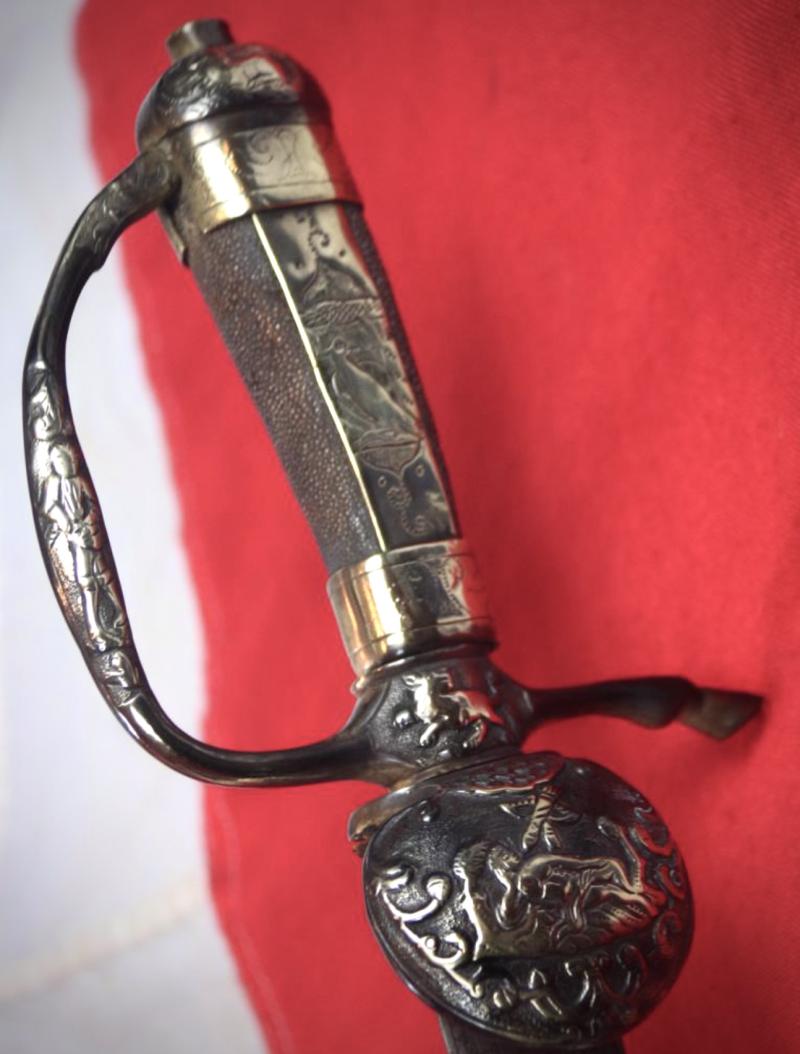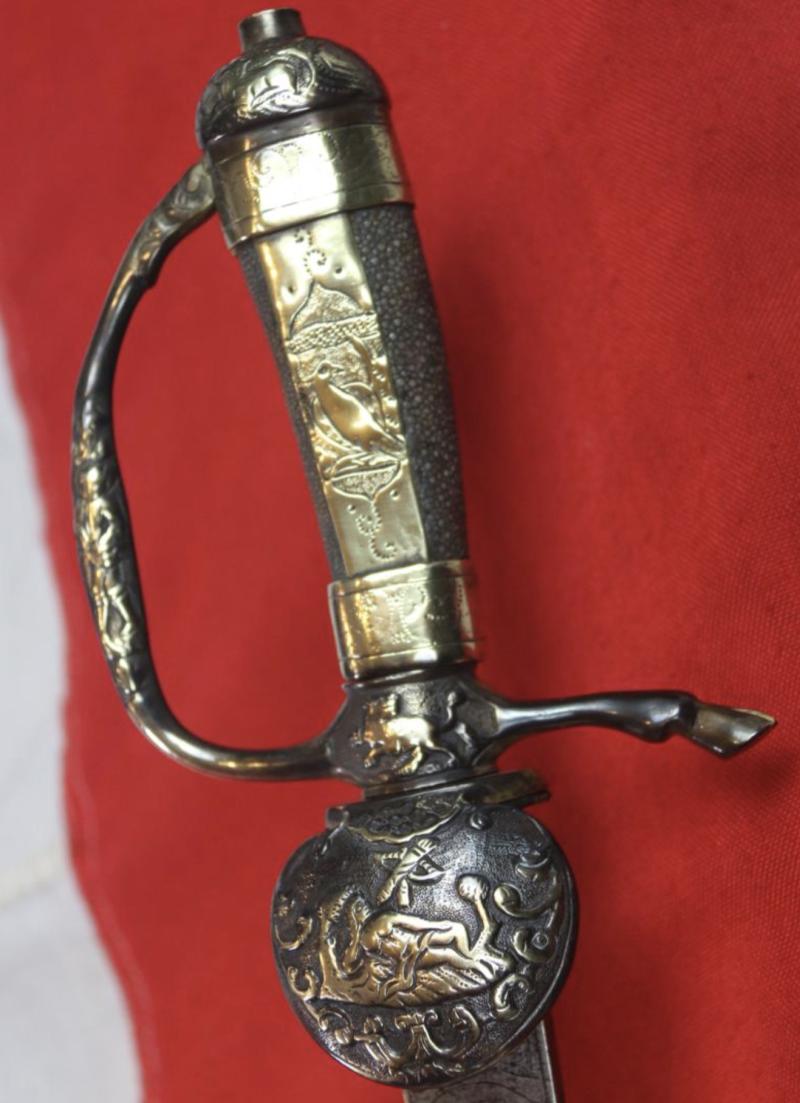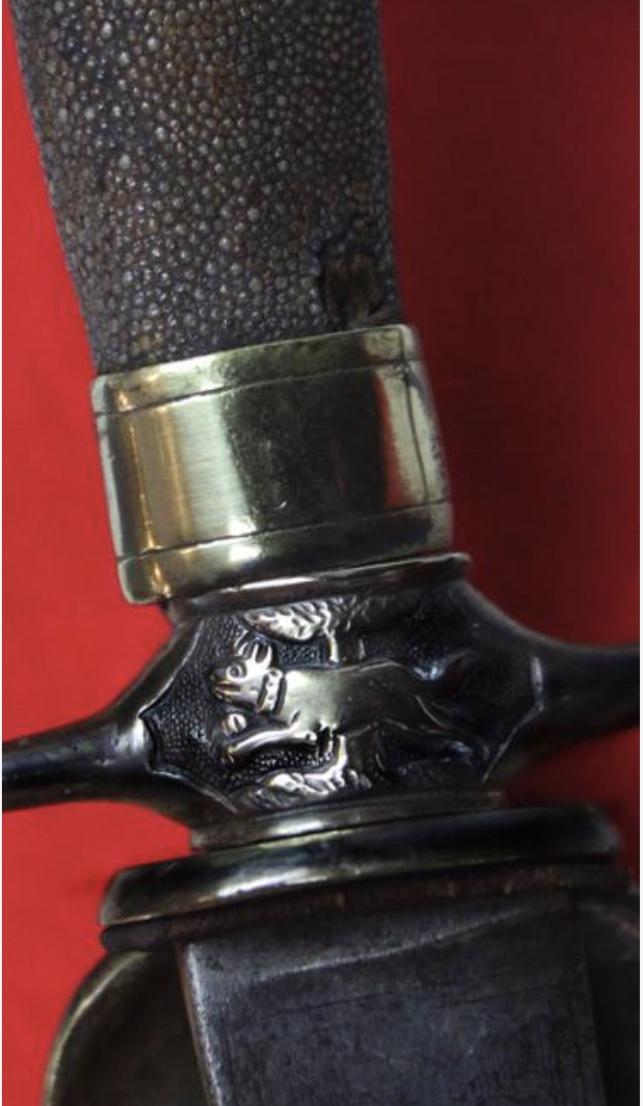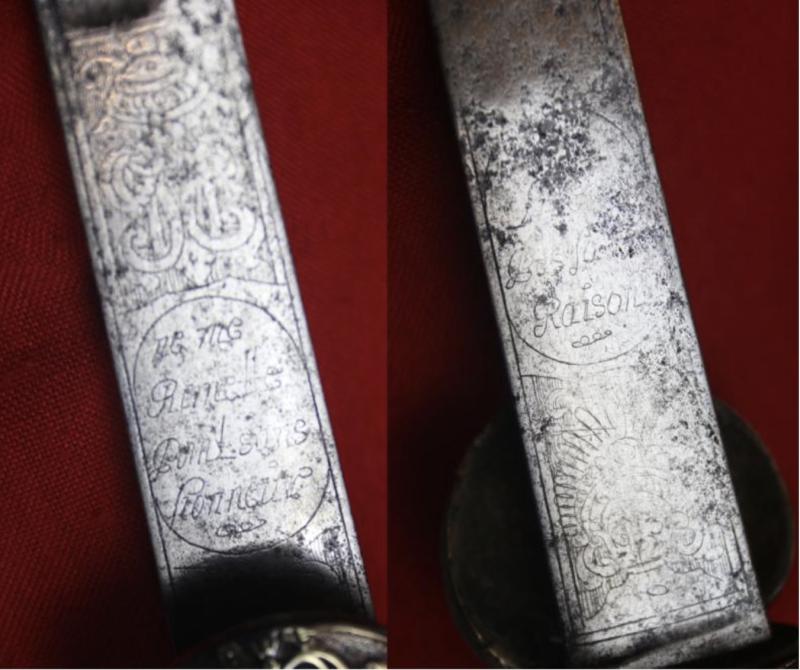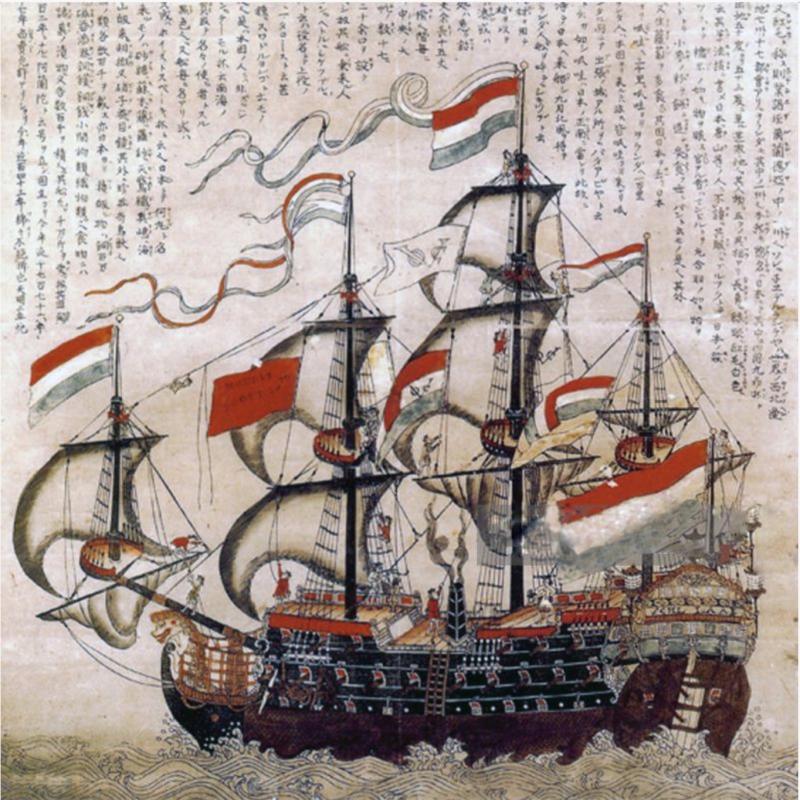Very Rare Circa 1700’s Japanese Nagasaki Emigre Sword Maker. A ‘Sawasa’ Naval Hanger A Japanese Hangar in The European Style, For a Senior Officer of the Dutch East India Company ( the VOC). A VOC Naval Captain of A So Called ‘Black Ship’
Made by Japanese emigre samurai sword koshirae makers and artisans, after 1639, by exiled Japanese sword fitting craftsmen working in Batavia, for a VOA Naval Admiral or Captain, likely a permitted trading black ship voyaging to the trading post at the Nagasaki island Dejima.
The Black Ships (in Japanese: 黒船, romanized: kurofune, Edo period term) were the names given to Portuguese and Dutch merchant ships,
In 1543, Portuguese initiated the first contacts, establishing a trade route linking Goa to Nagasaki. The large carracks engaged in this trade had the hull painted black with pitch, and the term came to represent all Western vessels. In 1639, after suppressing a rebellion blamed on the influence of Christian thought, the ruling Tokugawa shogunate retreated into an isolationist policy, the Sakoku. During this "locked state", contact with Japan by Westerners was restricted to Dutch traders on Dejima island at Nagasaki.
European hanger swords were the weapon of choice for senior maritime officers employed by the Dutch East India Company VOC , in fact by all senior naval officers at the time, including notorious pirates such as Edward Teach, aka ‘Blackbeard’. The hilt and fittings of this sword were probably added to the European blade by Japanese émigrés in the Dutch colony of Batavia (Jakarta).
They were made using the sawasa technique of gilded copper alloy with black shakudo detailing. Japanese samegawa grip {giant rayskin}, with a vertical panel, engraved with an exotic bird in front of two Indonesian mosque temple domes.
The level of workmanship suggests that the sword belonged to a high-ranking company official.
A fine and jolly rare Japanese export Sawasa hunting hanger. It features a straight blade with a double-edged tip and wide fuller, flanked by a narrow groove near the spine. In the base of the fuller on either side are a running stag and a boar, both prized hunting animals, and French motto of honour.
Sometimes referred to as 'Tonkinese chiseled work', these 18th century export wares became highly sought after, such as this 18th century Sawasa sword
The desiring incorporates a single shell-guard, chased and gilded in high relief against a blackened fish-roe shakudo ground, chisseled with reclining Eros with his bow and quiver. the hilt quilon block is chisseled on one sade by a collared hunting hound and tiger to the other side. The knuckle bow is chisseled with the figure of a turbanned Jakartan figure. the pommel is chisseled with a stag, and the quillon end is a stag hoof, and a covering in panels of Japanese samegawa {giant rayskin}. Overall the hilt is decorated with a combination of artistic styles of the Dutch East Indies, and Europe, made by Japanese emigre artistry with japanese samegawa binding, finished in a mixture of shakudo and gilt.
This sword is a beauty in a superb state of preservation.
Sawasa is the Japanese name given to objects made by Asian artisans, adopting European models combined with Japanese and Chinese materials and decorative motifs. This decoration consists of refined gilt relief and engraving on a lustrous lacquered surface. Sawasa wares are the result of cultural interaction between Asia and Europe. As a consequence of global trade in the 17th century, mutual interest arose in the peculiarities of each other’s culture. The Dutch and other Europeans brought rare objects back from their travels which whetted the appetite for exotic rarities. The earliest Sawasa objects are sword and hanger hilts and tobacco boxes ordered in Japan from Batavia, now Jakarta. Sawasa demonstrates not only the intercontinental commercial connections created by the Dutch East India Company (VOC) but also mutual cultural influences between Europe and Asia.
The decoration of the fittings are of the Japanese export style, in the European manner, but with fine and typical Japanese influences for a black ship naval captain of the VOC, in the late seventeenth or early eighteenth centuries, a style of metalwork known as sawasa that was produced for the Dutch East India Company in and around Nagasaki. Following Japan’s closed country (sakoku) edicts, from around 1639, exiled Japanese sword fitting craftsmen began working in Batavia, where the market for sawasa was a profitable one. The idea of sawasa was that objects made from a copper alloy were given gilt relief decoration with black lacquered highlights to achieve the appearance of shakudō. The extensive metalwork here resembles shakudō, but is likely to be sawasa with highlights in gold. The ground is covered with fine punch marks in a pattern resembling fish roe (nanako), although the punch marks are not completely uniform. The wooden hilt is covered on each side with panels of brass alloy, over Japanese samegawa giant ray skin and once overlaid with gold leaf;
Blade is engraved, on both sides, Ne me Tirez pas sans Raisons.. Ne me Remette point sans Honneur
Do not shoot me without reason do not hand me over without honour.
The hilt and blade is exceptionally sound and great condition, but with all the due appropriate age and surface wear from the past three hundred years
Picture in the gallery, a Japanese woodblock print, of a 17th century Dutch East India Co. vessel trading in Japan, a so-called Black Ship.
Another example of a Sawasa sword sold last May 24 for £14,080. It was a small sword, with an engraved blade. the engraving on that sword looks incredibly like it was created by the same hand as ours. Although the gilt on that small sword was mostly near perfect, where ours is not perfect.
For reference;
Sawasa – Japanese Export Art in Black and Gold 1650-1800 Rijksmuseum Amsterdam.
Every item is accompanied with our unique, Certificate of Authenticity. Of course any certificate of authenticity, given by even the best specialist dealers, in any field, all around the world, is simply a piece of paper,…however, ours is backed up with the fact we are the largest dealers of our kind in the world, with over 100 years and four generation’s of professional trading experience behind us.
See Bas Kist et al, Sawasa Japanese export art in black and gold 1650-1800, exhibition catalogue, Rijksmuseum Amsterdam, 28 November 1998 - 28 February 1999, pp. 53-54, A.13.1 - A.14.1 (illustrated)
For a related example formerly in the collection of the late A.R. Dufty F.S.A., past Master of the Armouries, H.M. Tower of London, see Christie's South Kensington, Antique Arms and Armour, 15 July 1998, lot 28
Code: 25524
2450.00 GBP


